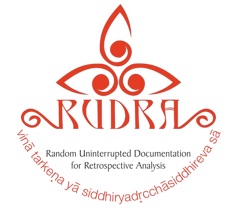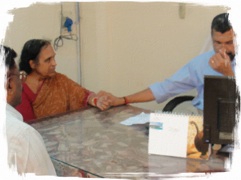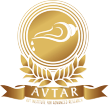RUDRA (RANDOM UNINTERRUPTED DOCUMENTATION FOR RETROSPECTIVE ANALYSIS)
RUDRA (Random Uninterrupted Documentation for Retrospective Analysis) is a clinical research program for reporting outcomes from ongoing clinical practice in the field of Ayurveda.
RUDRA is an initiative to document and report outcomes of Ayurvedic clinical interventions in the general practice of Ayurveda. The RUDRA (Random Uninterrupted Documentation for Retrospective Analysis) Program initiated at the Ayurvedic Trust, Coimbatore is an attempt to document ongoing clinical practice in the field of Ayurveda with a view to generate preliminary epidemiology, safety and effectiveness data. This program is now being experimentally implemented at National Institute of Ayurveda, Jaipur, Central Research Institute of Ayurveda, New Delhi, Institute for Post Graduate Research and Training in Ayurveda, Jamnagar, Dept. of Ayurveda, KMC, Manipal and Sreedhareeyam Eye Hospital, Koothattukulam.
RUDRA is the acronym for RANDOM UNINTERRUPTED DOCUMENTATION FOR RETROSPECTIVE ANALYSIS. RUDRA is a clinical documentation program that aims to generate preliminary data on epidemiology, safety and effectiveness of Ayurvedic treatment from ongoing clinical practice. This methodology can also be extended to other systems of Traditional Medicine. RUDRA stands for the third eye of Lord Shiva. The third eye of Lord Shiva represents the trained eye that is devoid of bias, passion and vested interest. In the context of the RUDRA Program, it denotes the involvement and participation of a team of well trained researchers to report clinical outcomes of Ayurvedic practice. The logistics of the RUDRA Program works around utilization of the waiting time that patients have to spend in the hospitals between registration and consultation. This waiting period is used creatively by subjecting the patient to a thorough clinical documentation by a team of researchers. The researchers prepare a comprehensive work up of the case or a summary depending on the available time. Registration staff and Epidemiologist collect the registration data and epidemiology questionnaire responses. In the Out Patient Department, RUDRA documentation is done through a RAPID ASSESSMENT METHOD (RAM). There are three levels of RAM - 1) Recording of only the complaints reported by patient, 2) Recording of complaints reported by patient and general observations of researcher, 3) Recording of complaints, observations and diagnosis. In select cases, the COMPLETE ASSESSMENT METHOD (CAM) is adopted. The COMPLETE ASSESSMENT METHOD (CAM) is predominantly used in the In Patient Department but can also be adopted in important cases or in clinics with less inflow of patients. The CAM consists of the following steps - Recording of Complaints, Vitals, Clinical Observations, Examination of Systems, Lab Investigations and Imaging, Preliminary, Tentative, Provisional, Differential and Final Diagnosis. It also consists of recording of Ayurvedic Clinical Parameters and the Treatment Strategy being adopted. The RAM approach will generate preliminary data on Health Seeking Behavior of patients seeking Ayurvedic and other traditional forms of health care. On the other hand, CAM approach generates in addition, preliminary safety and effectiveness data. Any new symptom reported by the patient is considered as a potential adverse event. Adverse event status is confirmed or ruled out after a retrospective analysis. Adverse events are classified and listed on the basis of severity, system affected and long term consequences. Associations are made with specific drugs or therapies if there is a strong correlation. Simple effectiveness data is generated by comparing baseline and endpoint data of patients.The time taken for the treatment and the nature of the outcome is assessed and recorded. RUDRA will thus generate preliminary data on health seeking behavior, safety and effectiveness. The outcomes of RUDRA will provide important clues for planning more rigorous clinical research including clinical trials. RUDRA will create the evidence base for continuity of use of Ayurvedic and other traditional medicines and therapies. It will promote continuity of care in medical practice. It will also create the basis for medical insurance coverage for traditional modalities of treatment as well as for accreditation of Ayurvedic hospitals under quality control programs. It is a challenging task to implement RUDRA in Ayurvedic institutions as the documentation program requires dedicated and motivated staff for implementation. Data collection needs to be done meticulously and it is difficult to enforce compliance. External auditing and certification of the centers implementing the RUDRA Program is under process. A Grade Centers will report more than 90% compliance in documenting cases and 90% compliance with the quality check parameters. B Grade Centers will report 75 to 90% compliance in documenting cases as well as quality check parameters. C Grade Centers will report 60 to 75% compliance in documenting cases as well as quality check parameters. Centers that do not meet the above criteria will not be graded and will be labeled as participating centers in the RUDRA Program. A Grade Centers will be recognized as Centers of Clinical Evidence in Traditional Medicine (CCETM).




















